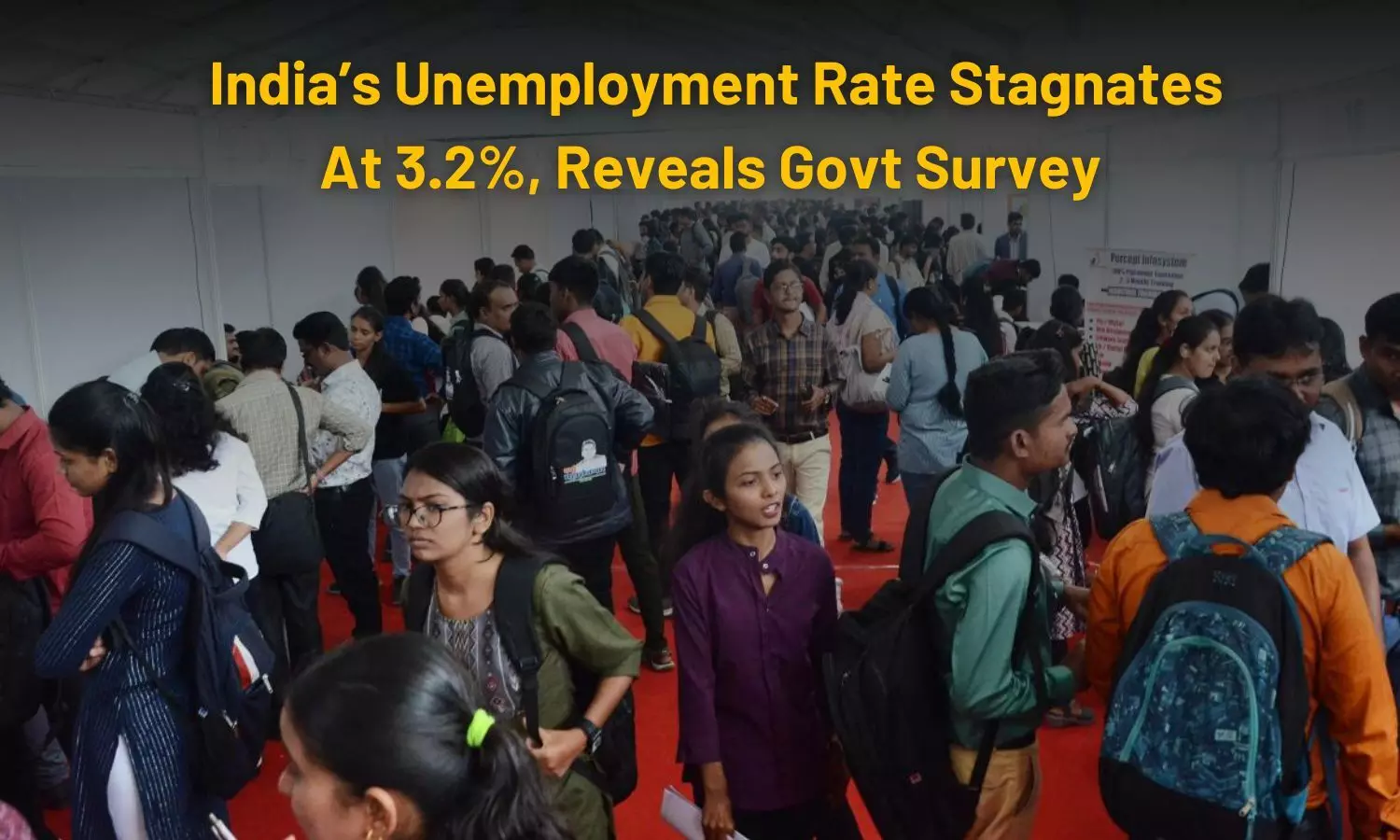India’s Unemployment Rate Stagnates At 3.2%, Reveals Govt Survey
India’s unemployment rate stagnated at 3.2% for the period between July-June 2023-24 from 2.9% in 2022-23 on account of deterioration in the labour markets
India’s Unemployment Rate Stagnates At 3.2%, Reveals Govt Survey

Following deterioration in the labour markets, India’s unemployment rate stood at 3.2% for the period between July-June 2023-24, reports the latest annual Periodic Labour Force Survey (PLFS).
The report showed that the unemployment rate in rural areas jumped to 2.5% in 2023-24 from 2.4% in 2022-23. While unemployment rate in urban areas declined to 5.1%, jobless rate among females soared to 3.2% in 2023-24 from 2.9% in 2022-23. Notably, the unemployment rate among males declined to 3.2% from previous year’s 3.3%
Published by the National Statistical Office (NSO), PLFS data is released every year focussing on the current status of employment in the country.
Notably, the labour force participation survey (LFPR), which is the percentage of total workforce in a population, increased to 60.1% in 2023-24 from 57.9% in 2022-23. While rural LFPR stood at 63.7%, the corresponding urban equivalent soared to 52% for 2023-24.
Broad employment status, which explains the state of having a regular source of employment increased to 21.7% in 2023-24 from 20.9% in 2022-23. Meanwhile, the share of people engaged in self-employment, which also includes unpaid household work or running a small business, increased to 58.4%.
Santosh Malhotra, visiting professor at the University of Bath explained that markets are still looking forward to recovery because the share of wage employment is significantly lower than the pre-pandemic period, which in turn is leading to an increase in self-employed individuals.
He added, “The corresponding increase in labour force participation and the share of the self-employed shows that more and more people are joining the labour markets and the economy isn’t able to generate enough decent jobs for them, which is leading to their being engaged as unpaid household help. In a way, the impact of reverse migration during the pandemic, which saw the addition of nearly 50 million people to agriculture is yet to be overcomed.”
Reportedly, for persons aged under 15 years, the unemployment rate for one-year period under “usual status” saw stagnation for the first time since the annual survey was first launched in April 2017.
Under “usual status” employment is calculated based on a reference period of 365 days preceding the date of survey. This is different from “employment status”, in which employment is determined based on a reference period of seven days, which is known as current weekly status (CWS) of the person.

